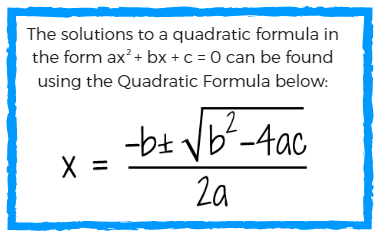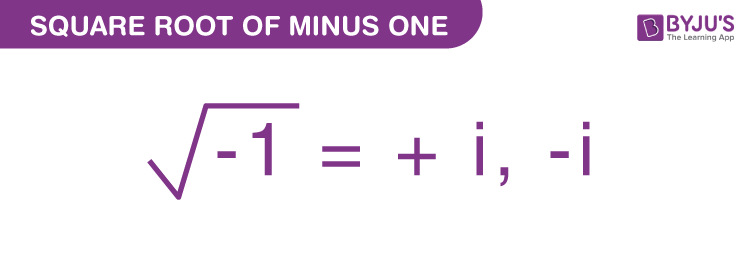Topic square root of negative 12: The concept of the square root of negative 12 often confuses many, but it introduces the fascinating world of imaginary numbers. This article delves into the mathematical representation, simplification steps, and practical applications of √-12, providing a comprehensive guide to mastering this intriguing topic.
Table of Content
- Square Root of Negative 12
- Introduction to Imaginary Numbers
- Understanding the Square Root of Negative Numbers
- Mathematical Representation of √-12
- Steps to Simplify √-12
- Properties and Applications of Imaginary Numbers
- Complex Numbers and Their Uses
- Visualizing Imaginary Numbers on the Complex Plane
- Common Misconceptions about Imaginary Numbers
- Practical Applications in Engineering and Physics
- Frequently Asked Questions about √-12
- Advanced Topics: Complex Analysis and Imaginary Numbers
- YOUTUBE: Video hướng dẫn cách tính căn bậc hai của các số âm, giúp bạn hiểu rõ và thực hành dễ dàng.
Square Root of Negative 12
The square root of a negative number involves the concept of imaginary numbers. The imaginary unit is denoted as \(i\), where \(i = \sqrt{-1}\). Thus, the square root of negative 12 can be expressed in terms of \(i\).
Mathematical Representation
The square root of -12 can be calculated as follows:
Steps to Simplify
- Recognize that \(\sqrt{-1} = i\).
- Factor -12 as \(-1 \times 12\).
- Take the square root of each factor separately: \(\sqrt{-1} = i\) and \(\sqrt{12} = 2\sqrt{3}\).
- Combine the results to get \(2\sqrt{3}i\).
Properties of Imaginary Numbers
- Imaginary numbers are used to extend the real number system to solve equations that do not have real solutions.
- The basic imaginary unit \(i\) satisfies \(i^2 = -1\).
- Complex numbers are in the form \(a + bi\), where \(a\) and \(b\) are real numbers.
Visual Representation
On the complex plane, the number \(2\sqrt{3}i\) is represented as a point on the imaginary axis, 2\(\sqrt{3}\) units away from the origin.
| Expression | Value |
|---|---|
| \(\sqrt{-12}\) | \(2\sqrt{3}i\) |
| \(i\) | \(\sqrt{-1}\) |
| \(\sqrt{12}\) | \(2\sqrt{3}\) |
Applications
Imaginary and complex numbers are used in various fields such as engineering, physics, and applied mathematics to solve problems involving oscillations, wave functions, and electrical circuits.
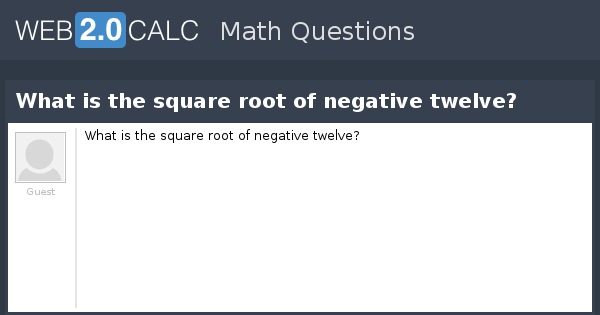
READ MORE:
Introduction to Imaginary Numbers
Imaginary numbers are a fundamental concept in mathematics, extending the idea of real numbers to include solutions to equations that involve the square roots of negative numbers. The imaginary unit, denoted as \(i\), is defined by the property \(i^2 = -1\). This allows us to express the square roots of negative numbers in terms of \(i\).
For instance, the square root of -12 can be simplified using imaginary numbers:
Steps to Simplify the Square Root of a Negative Number
- Identify the negative number under the square root.
- Express the negative number as the product of -1 and a positive number.
- Separate the square roots of -1 and the positive number.
- Simplify the square root of the positive number, if possible.
- Combine the results using the imaginary unit \(i\).
Following these steps, we can simplify the square root of -12:
- \(\sqrt{-12}\)
- = \(\sqrt{-1 \times 12}\)
- = \(\sqrt{-1} \times \sqrt{12}\)
- = \(i \times 2\sqrt{3}\)
- = \(2\sqrt{3}i\)
Properties of Imaginary Numbers
- Basic Definition: The imaginary unit \(i\) is defined such that \(i^2 = -1\).
- Complex Numbers: Imaginary numbers are often used in combination with real numbers to form complex numbers, written as \(a + bi\) where \(a\) and \(b\) are real numbers.
- Arithmetic Operations: Imaginary numbers follow specific rules for addition, subtraction, multiplication, and division, similar to real numbers but taking into account that \(i^2 = -1\).
Applications of Imaginary Numbers
Imaginary numbers have significant applications in various fields:
| Field | Application |
|---|---|
| Engineering | Analysis of electrical circuits, signal processing, and control theory. |
| Physics | Quantum mechanics, wave equations, and relativity theory. |
| Mathematics | Complex analysis, solving polynomial equations, and fractals. |
Understanding the Square Root of Negative Numbers
The concept of the square root of negative numbers introduces us to imaginary numbers. A negative number under a square root requires the use of the imaginary unit, denoted as \(i\), where \(i = \sqrt{-1}\). This allows us to work with the square roots of negative numbers by converting them into imaginary numbers.
Here are the steps to understand and calculate the square root of a negative number:
- Identify the negative number under the square root.
- Express the negative number as a product of -1 and a positive number.
- Separate the square root of -1 and the square root of the positive number.
- Simplify the square root of the positive number, if possible.
- Combine the results using the imaginary unit \(i\).
For example, let's simplify the square root of -12:
- \(\sqrt{-12}\)
- = \(\sqrt{-1 \times 12}\)
- = \(\sqrt{-1} \times \sqrt{12}\)
- = \(i \times 2\sqrt{3}\)
- = \(2\sqrt{3}i\)
Properties of Imaginary Numbers
- Imaginary Unit: The imaginary unit \(i\) is defined by \(i^2 = -1\).
- Complex Numbers: Imaginary numbers combine with real numbers to form complex numbers, written as \(a + bi\) where \(a\) and \(b\) are real numbers.
- Arithmetic Operations: Operations with imaginary numbers follow similar rules as real numbers, with the consideration that \(i^2 = -1\).
Applications of Imaginary Numbers
Imaginary numbers are essential in various fields:
| Field | Application |
|---|---|
| Engineering | Analysis of electrical circuits, signal processing, and control theory. |
| Physics | Quantum mechanics, wave equations, and relativity theory. |
| Mathematics | Complex analysis, solving polynomial equations, and fractals. |
Mathematical Representation of √-12
Understanding the mathematical representation of the square root of negative 12 involves using imaginary numbers. The square root of a negative number introduces the imaginary unit \(i\), defined by \(i = \sqrt{-1}\). This helps in simplifying expressions that include the square root of negative numbers.
Here is the step-by-step process to represent and simplify \(\sqrt{-12}\):
- Recognize the negative number under the square root: \(\sqrt{-12}\).
- Express the negative number as a product of -1 and a positive number: \(\sqrt{-1 \times 12}\).
- Separate the square roots: \(\sqrt{-1} \times \sqrt{12}\).
- Simplify the square root of the positive number: \(\sqrt{12} = 2\sqrt{3}\).
- Combine the results using the imaginary unit \(i\): \(\sqrt{-1} = i\), hence \(\sqrt{-12} = 2\sqrt{3}i\).
Therefore, the mathematical representation of \(\sqrt{-12}\) is \(2\sqrt{3}i\).
Complex Numbers Involving √-12
Complex numbers combine real and imaginary numbers. For \(\sqrt{-12}\), we get two solutions because of the properties of square roots:
- Positive solution: \(2\sqrt{3}i\)
- Negative solution: \(-2\sqrt{3}i\)
These solutions are derived as follows:
Applications of Complex Numbers
Complex numbers, including those involving imaginary units like \(i\), are vital in various fields:
| Field | Application |
|---|---|
| Engineering | Analyzing electrical circuits, signal processing, and control systems. |
| Physics | Quantum mechanics, wave functions, and relativity theory. |
| Mathematics | Complex analysis, solving polynomial equations, and studying fractals. |
Steps to Simplify √-12
To simplify the square root of -12, we use the concept of imaginary numbers. The imaginary unit \(i\) is defined as \(i = \sqrt{-1}\). Follow these steps to simplify √-12:
- Identify the negative number under the square root: \(\sqrt{-12}\).
- Express the negative number as a product of -1 and a positive number: \(\sqrt{-1 \times 12}\).
- Separate the square roots of -1 and the positive number: \(\sqrt{-1} \times \sqrt{12}\).
- Recognize that \(\sqrt{-1} = i\): \(\sqrt{-1} \times \sqrt{12} = i \times \sqrt{12}\).
- Simplify the square root of the positive number: \(\sqrt{12} = 2\sqrt{3}\).
- Combine the results using the imaginary unit \(i\): \(\sqrt{-12} = 2\sqrt{3}i\).
Thus, the simplified form of \(\sqrt{-12}\) is \(2\sqrt{3}i\).
Detailed Breakdown of Each Step
- Recognize the negative number under the square root:
The initial expression is \(\sqrt{-12}\), indicating the need to deal with the square root of a negative number.
- Express the negative number as a product:
We rewrite -12 as the product of -1 and 12: \(\sqrt{-12} = \sqrt{-1 \times 12}\).
- Separate the square roots:
We can separate the square root of a product into the product of the square roots: \(\sqrt{-1 \times 12} = \sqrt{-1} \times \sqrt{12}\).
- Identify the imaginary unit \(i\):
The square root of -1 is defined as \(i\): \(\sqrt{-1} = i\). Therefore, \(\sqrt{-1} \times \sqrt{12} = i \times \sqrt{12}\).
- Simplify the square root of 12:
The square root of 12 can be simplified further by factoring 12 into 4 and 3, giving us \(\sqrt{12} = \sqrt{4 \times 3} = 2\sqrt{3}\).
- Combine the results:
Finally, combining all parts together gives us the simplified form: \(\sqrt{-12} = 2\sqrt{3}i\).
Applications of Simplified Imaginary Numbers
The simplified form \(2\sqrt{3}i\) can be used in various fields:
| Field | Application |
|---|---|
| Engineering | Analysis of AC circuits, signal processing. |
| Physics | Quantum mechanics, wave functions. |
| Mathematics | Complex number theory, solving polynomial equations. |

Properties and Applications of Imaginary Numbers
Imaginary numbers are defined as multiples of the imaginary unit \(i\), where \(i\) is the square root of -1. These numbers are essential in extending the concept of numbers beyond the real number line, enabling complex number representation and solving equations that have no real solutions.
Properties of Imaginary Numbers
- Square Property: The most fundamental property is that \(i^2 = -1\). This property underlies many calculations involving imaginary numbers.
- Periodic Powers: Imaginary numbers follow a cyclical pattern when raised to successive powers:
- \(i^1 = i\)
- \(i^2 = -1\)
- \(i^3 = -i\)
- \(i^4 = 1\)
- \(i^{4k} = 1\) for any integer \(k\)
- Addition and Subtraction: The real and imaginary parts are treated separately. For example, \((3 + 2i) + (1 - 4i) = (3 + 1) + (2 - 4)i = 4 - 2i\).
- Multiplication: The distributive property applies. For instance, \((2i) \cdot (3i) = 6i^2 = -6\).
- Division: Division involves multiplying the numerator and the denominator by the conjugate of the denominator. For example, \(\frac{1}{-i} \cdot \frac{i}{i} = \frac{i}{-i^2} = \frac{i}{1} = i\).
Applications of Imaginary Numbers
Imaginary numbers, while abstract, have several practical applications in various fields:
- Electrical Engineering: They are crucial for analyzing and designing electrical circuits, particularly in representing alternating current (AC) signals and performing calculations involving impedance and phase shifts.
- Quantum Mechanics: Imaginary numbers help describe physical phenomena at atomic and subatomic levels. They are integral to the formulation of Schrödinger's equation, which is fundamental to quantum theory.
- Signal Processing: In signal processing, imaginary numbers are used to analyze and manipulate complex waveforms, particularly in Fourier analysis, which breaks down signals into their constituent frequencies.
- Euler's Formula: Euler's formula, \(e^{i\theta} = \cos(\theta) + i\sin(\theta)\), establishes a deep connection between trigonometry, complex numbers, and imaginary numbers, linking exponential and trigonometric functions.
- Computer Graphics: Imaginary numbers are used to perform rotations and scaling in computer graphics, facilitating complex transformations and animations.
Complex Numbers and Their Uses
Complex numbers are essential mathematical entities that extend the concept of one-dimensional real numbers to the two-dimensional complex plane using the form \(a + bi\), where \(a\) and \(b\) are real numbers, and \(i\) is the imaginary unit with the property \(i^2 = -1\).
Properties of Complex Numbers
- Addition and Subtraction: The sum or difference of two complex numbers \( (a + bi) \) and \( (c + di) \) is given by \( (a + c) + (b + d)i \).
- Multiplication: The product of two complex numbers is obtained by expanding the product \( (a + bi)(c + di) \) and simplifying using \( i^2 = -1 \).
- Conjugate: The complex conjugate of \( (a + bi) \) is \( (a - bi) \). Multiplying a complex number by its conjugate results in a real number \( a^2 + b^2 \).
- Magnitude: The magnitude (or modulus) of a complex number \( z = a + bi \) is \( |z| = \sqrt{a^2 + b^2} \).
- Division: To divide complex numbers, multiply the numerator and denominator by the conjugate of the denominator.
Geometric Interpretation
Complex numbers can be represented on the complex plane, where the x-axis represents the real part and the y-axis represents the imaginary part. This representation allows for a geometric interpretation of complex operations:
- Addition: Vector addition in the complex plane.
- Multiplication: Scaling and rotating vectors.
- Magnitude: Distance from the origin.
- Argument: Angle with the positive real axis.
Applications of Complex Numbers
- Electrical Engineering: Used to analyze AC circuits, where voltage and current are represented as complex numbers to simplify calculations involving phase differences.
- Quantum Mechanics: Wave functions are often complex-valued, and operations on these functions are essential to understanding physical phenomena at the quantum level.
- Control Theory: Complex numbers help in the analysis and design of control systems, particularly in the context of stability and response analysis.
- Signal Processing: Fourier transforms, which convert signals from time domain to frequency domain, extensively use complex numbers.
- Fluid Dynamics: Complex potential functions are used to solve two-dimensional potential flow problems.
The diverse applications of complex numbers across various fields underline their significance not just in theoretical mathematics, but also in solving practical, real-world problems.
Visualizing Imaginary Numbers on the Complex Plane
Imaginary numbers can be visualized on the complex plane, a two-dimensional plane where each point represents a complex number. The horizontal axis represents the real part, and the vertical axis represents the imaginary part of the complex number.
For example, the complex number \( z = a + bi \) can be plotted on the complex plane as follows:
- The real part \( a \) is plotted along the x-axis.
- The imaginary part \( b \) is plotted along the y-axis.
Consider the complex number \( z = 3 + 4i \):
- It has a real part of 3.
- It has an imaginary part of 4.
This number would be plotted at the point (3, 4) on the complex plane.
The complex plane allows us to visualize operations with complex numbers:
- Addition: To add two complex numbers, add their real parts and their imaginary parts separately.
- Subtraction: To subtract one complex number from another, subtract their real parts and their imaginary parts separately.
- Multiplication: Multiplying two complex numbers involves distributing the multiplication over both the real and imaginary parts.
- Division: Dividing complex numbers requires multiplying the numerator and denominator by the complex conjugate of the denominator.
Another way to represent complex numbers is in polar form:
- The modulus \( |z| \) is the distance from the origin to the point \( z \), calculated as \( |z| = \sqrt{a^2 + b^2} \).
- The argument \( \theta \) is the angle formed with the positive x-axis, given by \( \theta = \tan^{-1} \left( \frac{b}{a} \right) \).
In polar form, the complex number \( z = a + bi \) can be written as \( z = |z| (\cos \theta + i \sin \theta) \) or \( z = |z| e^{i \theta} \), according to Euler's formula.
For example, the complex number \( 3 + 4i \) has a modulus of 5 and an argument of \( \tan^{-1}(\frac{4}{3}) \). Thus, it can be written in polar form as \( 5 (\cos \theta + i \sin \theta) \) where \( \theta = \tan^{-1}(\frac{4}{3}) \).
By plotting complex numbers and their operations on the complex plane, we gain a powerful visual tool for understanding their behavior and relationships. This representation is fundamental in fields like engineering and physics, where complex numbers are used to model waveforms, oscillations, and other phenomena.
Common Misconceptions about Imaginary Numbers
Imaginary numbers often lead to confusion and misconceptions. Here are some common misunderstandings and the truths that dispel them:
- Misconception: Imaginary numbers are not real.
Clarification: Despite their name, imaginary numbers are a legitimate part of mathematics. The term "imaginary" distinguishes them from real numbers, but they are essential for solving certain types of equations that real numbers cannot solve.
- Misconception: Imaginary numbers have no practical use.
Clarification: Imaginary numbers are widely used in various fields such as engineering, physics, and computer science. They help in solving real-world problems, especially in dealing with periodic functions, signal processing, and complex electrical circuits.
- Misconception: Complex numbers are too complicated to understand.
Clarification: Complex numbers, composed of a real part and an imaginary part, may seem intimidating but are straightforward once you understand the basics. They offer powerful tools for mathematical and scientific analysis.
- Misconception: Negative square roots do not exist.
Clarification: Negative square roots lead to imaginary numbers. For example, the square root of -12 can be expressed as √(-12) = √(12) * i = 2√3 * i, where \(i\) is the imaginary unit defined as √(-1).
- Misconception: Real and imaginary numbers do not mix.
Clarification: Real and imaginary numbers combine to form complex numbers, which are written in the form \(a + bi\), where \(a\) and \(b\) are real numbers, and \(i\) is the imaginary unit. This combination expands the scope of mathematical solutions and applications.
Understanding these clarifications helps in appreciating the role and importance of imaginary numbers in both theoretical and practical aspects of mathematics.
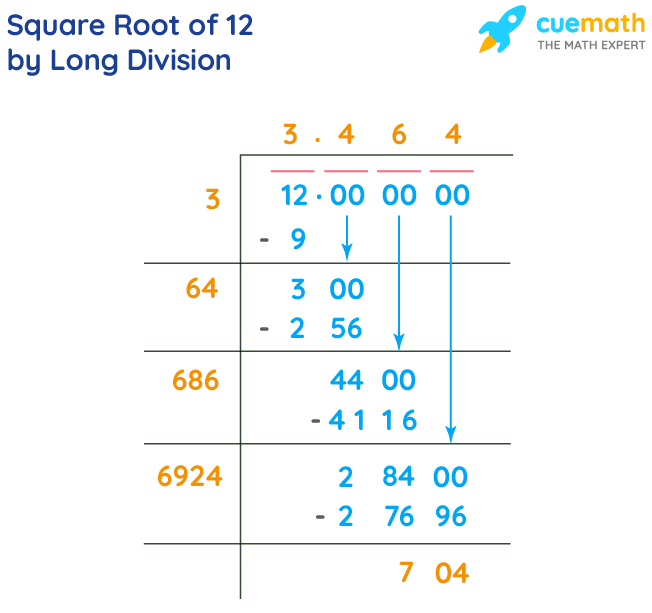
Practical Applications in Engineering and Physics
Imaginary numbers and complex numbers, such as the square root of negative 12 (\(\sqrt{-12}\)), play significant roles in various fields of engineering and physics. Here are some practical applications:
1. Electrical Engineering
In electrical engineering, complex numbers are used extensively to analyze and design circuits. They help in understanding the behavior of alternating current (AC) circuits, where voltages and currents are represented as complex numbers to simplify calculations involving phase differences.
- Impedance in AC circuits can be represented as a complex number \(Z = R + jX\), where \(R\) is the resistance and \(X\) is the reactance.
- The use of complex numbers allows for the calculation of power, voltage, and current using methods like the phasor approach.
2. Control Systems
Control systems often use complex numbers to model and analyze system behavior. The stability of a system can be determined by examining the poles of its transfer function in the complex plane.
- Root locus plots, Bode plots, and Nyquist plots use complex numbers to provide insights into system stability and performance.
3. Signal Processing
In signal processing, complex numbers are essential for representing and manipulating signals. Fourier transforms, which convert time-domain signals into frequency-domain representations, use complex numbers.
- Discrete Fourier Transform (DFT) and Fast Fourier Transform (FFT) algorithms rely on complex numbers to analyze the frequency components of signals.
- Filtering and modulation techniques in telecommunications also use complex numbers to manage signal transmission and reception.
4. Quantum Mechanics
Quantum mechanics fundamentally relies on complex numbers to describe the state of quantum systems. The wave functions, which describe the probabilities of a particle's position and momentum, are complex-valued functions.
- The Schrödinger equation, a key equation in quantum mechanics, uses complex numbers to model the evolution of quantum states over time.
5. Fluid Dynamics
In fluid dynamics, complex potential functions are used to solve problems involving incompressible and irrotational flows. These functions simplify the analysis of fluid flow around objects.
- Potential flow theory uses complex functions to describe the velocity field and streamline patterns around objects, aiding in the design of aerodynamic structures.
6. Electromagnetic Theory
Electromagnetic waves and fields are often described using complex numbers. Maxwell's equations, which govern electromagnetic phenomena, use complex notation to simplify the mathematical treatment of wave propagation, reflection, and transmission.
- Impedance of transmission lines and waveguides can be represented using complex numbers to analyze signal behavior over distances.
In conclusion, the use of imaginary and complex numbers is integral to many practical applications in engineering and physics. These numbers simplify complex calculations and provide powerful tools for modeling, analysis, and design in various scientific and engineering disciplines.
Frequently Asked Questions about √-12
Understanding the square root of negative numbers, particularly √-12, often raises several questions. Here are some of the most frequently asked questions and their answers:
-
What is √-12?
The square root of -12 is represented as an imaginary number. It can be simplified as follows:
\[\sqrt{-12} = \sqrt{12} \cdot \sqrt{-1} = 2\sqrt{3} \cdot i\]
Here, \(i\) is the imaginary unit, defined as \(\sqrt{-1}\).
-
Why can't we have a real number square root of a negative number?
In the set of real numbers, the square of any real number is always non-negative. Therefore, no real number squared will result in a negative number. Imaginary numbers extend the real numbers to allow for square roots of negative numbers.
-
How do you simplify the square root of a negative number?
To simplify the square root of a negative number, you separate it into the product of the square root of the positive part and the square root of -1 (which is \(i\)). For example:
\[\sqrt{-a} = \sqrt{a} \cdot \sqrt{-1} = \sqrt{a} \cdot i\]
-
What are imaginary numbers used for?
Imaginary numbers are used in various fields such as engineering, physics, and complex number theory. They are particularly useful in solving quadratic equations that do not have real solutions and in representing oscillations and waveforms in electrical engineering.
-
Can you visualize imaginary numbers?
Yes, imaginary numbers can be visualized on the complex plane, where the x-axis represents real numbers and the y-axis represents imaginary numbers. A complex number \(a + bi\) is represented as a point \((a, b)\) on this plane.
-
Is \(\sqrt{-12}\) the only solution?
No, \(\sqrt{-12}\) can also be written as \(-2\sqrt{3} \cdot i\), because squaring both \(2\sqrt{3} \cdot i\) and \(-2\sqrt{3} \cdot i\) gives -12.
-
What is the significance of the principal square root?
The principal square root is the non-negative square root of a number. For negative numbers, the principal square root is defined in terms of the imaginary unit \(i\). For example, the principal square root of -12 is \(2\sqrt{3} \cdot i\).
Advanced Topics: Complex Analysis and Imaginary Numbers
Complex analysis is a branch of mathematics that studies functions of complex numbers. Imaginary numbers are crucial in this field, providing deeper insights into various mathematical and physical phenomena. Here's a comprehensive overview of advanced topics in complex analysis and their relationship with imaginary numbers.
1. Complex Functions
A complex function is a function that takes complex numbers as inputs and provides complex numbers as outputs. A function \( f(z) \) is said to be analytic if it is differentiable at every point in its domain. An example of such a function is \( f(z) = z^2 + 1 \).
2. Cauchy-Riemann Equations
For a complex function \( f(z) = u(x, y) + iv(x, y) \) to be analytic, it must satisfy the Cauchy-Riemann equations:
\[
\frac{\partial u}{\partial x} = \frac{\partial v}{\partial y} \quad \text{and} \quad \frac{\partial u}{\partial y} = -\frac{\partial v}{\partial x}
\]
These equations ensure that the function is differentiable in the complex plane.
3. Contour Integration
Contour integration involves integrating complex functions along a path or contour in the complex plane. The integral of a function \( f(z) \) along a contour \( C \) is given by:
\[
\int_C f(z) \, dz
\]
This technique is particularly useful in evaluating integrals that are difficult to solve using standard methods.
4. Residue Theorem
The residue theorem is a powerful tool in complex analysis. It states that if \( f(z) \) is analytic inside and on a simple closed contour \( C \), except for isolated singularities, then:
\[
\int_C f(z) \, dz = 2\pi i \sum \text{Res}(f, z_k)
\]
where \( \text{Res}(f, z_k) \) denotes the residue of \( f \) at the singularity \( z_k \).
5. Applications in Physics
Complex analysis and imaginary numbers have significant applications in physics. They are used in solving differential equations that model physical phenomena such as electromagnetic waves, quantum mechanics, and fluid dynamics. For instance, in quantum mechanics, the Schrödinger equation often involves complex wave functions.
6. Fourier Transform
The Fourier transform is an essential tool in both engineering and physics. It transforms a function of time into a function of frequency. The transform is defined as:
\[
F(\omega) = \int_{-\infty}^{\infty} f(t) e^{-i\omega t} \, dt
\]
This integral uses the imaginary unit \( i \) to relate time-domain and frequency-domain representations.
7. Conformal Mappings
Conformal mappings preserve angles and are used to transform complex functions while maintaining their essential properties. These mappings are essential in fluid dynamics, aerodynamics, and other fields where the shape and flow properties need to be analyzed.
In conclusion, imaginary numbers and complex analysis provide powerful tools for solving advanced mathematical problems and have extensive applications in engineering and physics. By understanding these concepts, one can gain deeper insights into both theoretical and applied sciences.
Video hướng dẫn cách tính căn bậc hai của các số âm, giúp bạn hiểu rõ và thực hành dễ dàng.
căn bậc hai của số âm #căn bậc hai #12
READ MORE:
Video hướng dẫn cách tính căn bậc hai của một số âm trong chương trình toán nâng cao A Level, giúp bạn hiểu rõ và thực hành dễ dàng.
Y12 Toán Nâng Cao Bài 4A.2 – Căn Bậc Hai của Số Âm - Toán Nâng Cao A Level

